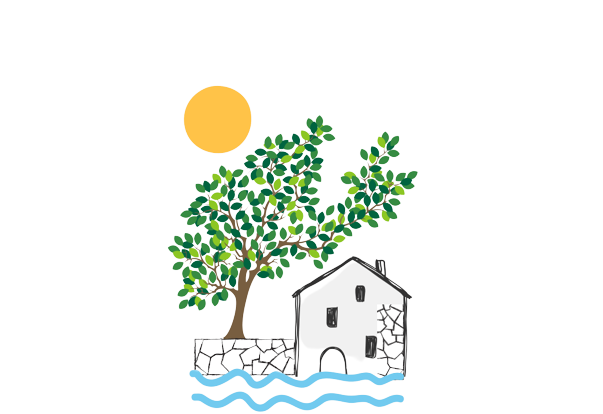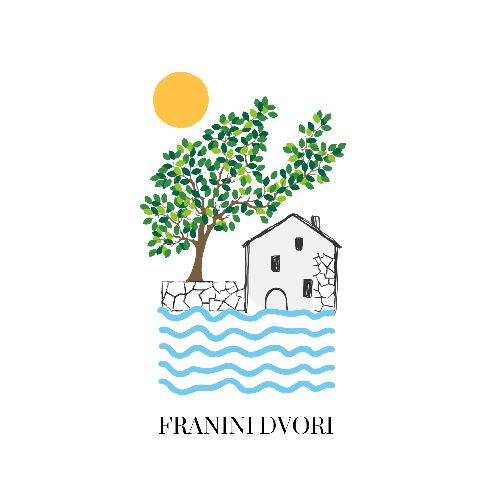- There are few restaurants on the island where you can have lunch or dinner
- During the high season there is a ferry boat from Trogir, 4 times a day. We suggest checking the time table on jadrolinija.hr
- If you are coming by car, it is neccesary to buy ferry ticket in advance (online or contact us so we can buy tickets for you)
Trogir
Trogir is a historic town and harbour on the Adriatic coast in Croatia, with a population of approximately 13,000. Today, it is a part of the greater Split metropolitan area or conurbation which numbers over 400,000 inhabitants. It is included on the UNESCO World Heritage List as it's one of the best preserved medieval towns in Europe. It is a fascinating place to just wander around but also contains a range of accommodation.
Trogir is a jewel of a town encased in 15th-century walls. Tiny medieval streets wind through the enchanting town revealing hidden restaurants and eye-catching galleries. A wide seaside promenade snakes around the town, culminating in a charming port full of sailboats waiting to take you to the nearby islands such as Drvenik Mali and Drvenik Veli, with their pristine sand beaches and secluded coves.
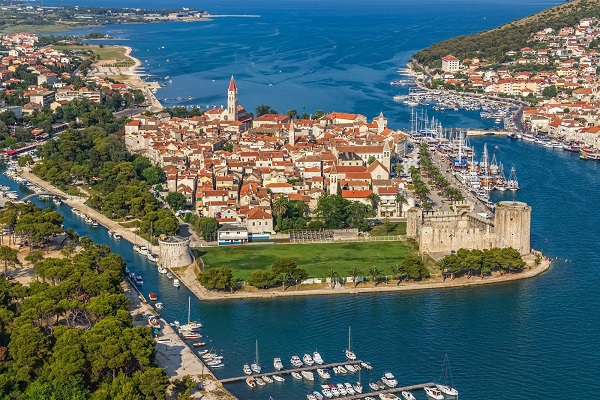
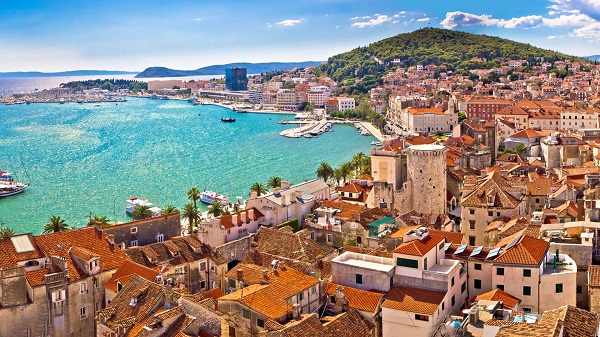
Split
In the recent years, Split has become tourist centre, but it is also important Croatian and Mediterranean cultural centre. Along numerous galleries, cinemas, multimedia centre and three theatres, Split offers rich variety of cultural events.
Citizens of Split like to claim the title of the sportiest city in the world. Numerous Olympics, World and European medals won in tennis, swimming, water polo, rowing, sailing, football, basketball, handball, athletics and martial arts support the theory.
Šibenik
Šibenik, a gem in the Croatian Adriatic, is situated along the mouth of Krka on the most picturesque part of the eastern Adriatic coast. As the oldest Croatian autochtonous town it was first mentioned in 1066 during the reign of the Croatian King Kresimir IV.
The rich cultural and historical heritage of the city is visible in the impressive Cathedral of sv. Jakov [St. Jacob], built by the famous architect Juraj Dalmatinac and is under UNESCO protection. Numerous churches, monasteries, palaces and four fortresses 'frame' the city, and also testify to the perseverance, renunciation and faith of generations of people of Šibenik. Šibenik is a city of culture, the host to the only International Children's Festival as well as traditional events such as Dalmatian chanson Evenings.
Near the town there are two national parks - Krka and Kornati whose fascinating landscapes take visitors breath away.
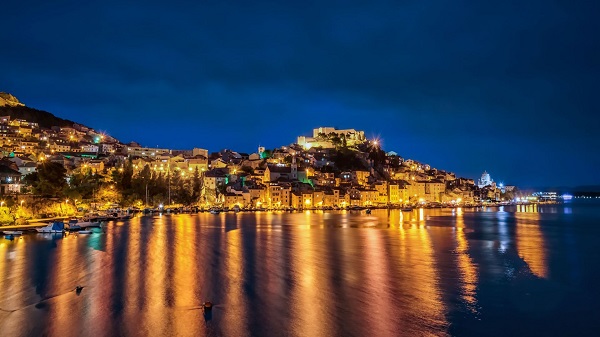
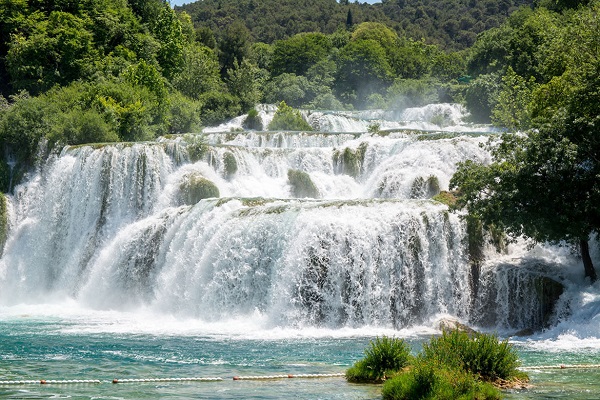
Krka waterfalls
Krka National Park lies about 10km inland from Sibenik in this part of Dalmatia. Named after the Krka River, the Park covers an area of just over 142 square km and includes two thirds of the river itself. The top attraction of the Park are its magnificent waterfalls, including the famous Skradinski Buk falls which are one of Croatia’s most famous sights.
Other highlights include the small island of Visovac and Roski Slap waterfall. A boat trip through the park (included in the entrance ticket) is a great way of seeing much of the Park.
Best of all, it is possible to swim in some locations in Krka National Park! (To be sure to bring your swimming costume or trunks along!)
Plitvice lakes
Plitvice Lakes is the oldest and largest national park in the Republic of Croatia. The park is situated in the mountainous region of Croatia, between the Mala Kapela mountain range in the west and northwest, and the Lička Plješivica mountain range to the southeast.
With its exceptional natural beauty, this area has always attracted nature lovers, and already on 8 April 1949, it was proclaimed Croatia’s first national park. The process of tufa formation, which results in the building of the tufa, or travertine, barriers and resulted in the creation of the lakes, is the outstanding universal value, for which the Plitvice Lakes were internationally recognised on 26 October 1979 with their inscription onto the UNESCO World Heritage List. In 1997, the boundaries of the national park were expanded, and today it covers an area just under 300 km2.
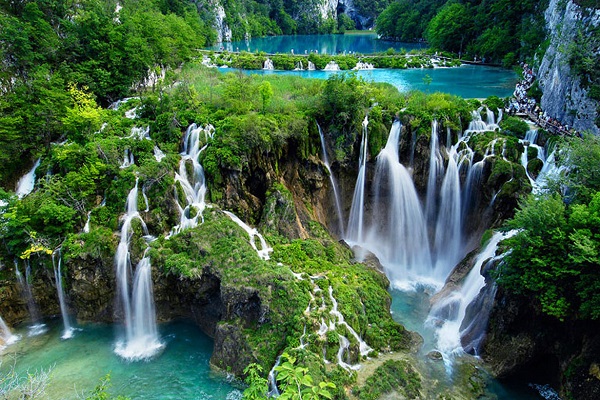
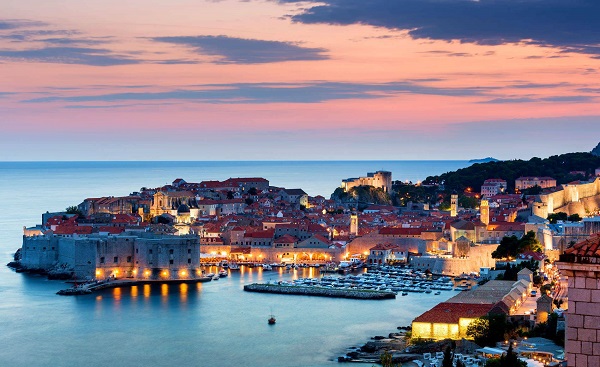
Dubrovnik
Dubrovnik is a well-known town in Dalmatia, located almost at the very end of Croatian territories. The wider area of the town includes Lapad peninsula, where most of the Dubrovnik hotels and beaches are located. Gruž is western part of the town where Dubrovnik’s main harbour, ferry terminals and bus station is located.
The oldest part of Dubrovnik, the Old Town is located east of Lapad at the bottom of Srd hill. It has well preserved cultural and historical heritage and is therefore inscribed on the UNESCO’s List of World Heritage Sites. Old Town’s street and squares are stone-paved while the architecture consists of elegant terraced houses, monasteries, churches, palaces, galleries and museums.
Except for its historical heritage, Dubrovnik also offers good holiday opportunity in terms of sea, sun, nightlife, restaurants and taverns with various specialities of local as well as international cuisine. Nowadays, Dubrovnik has a population of about 44 thousand.
